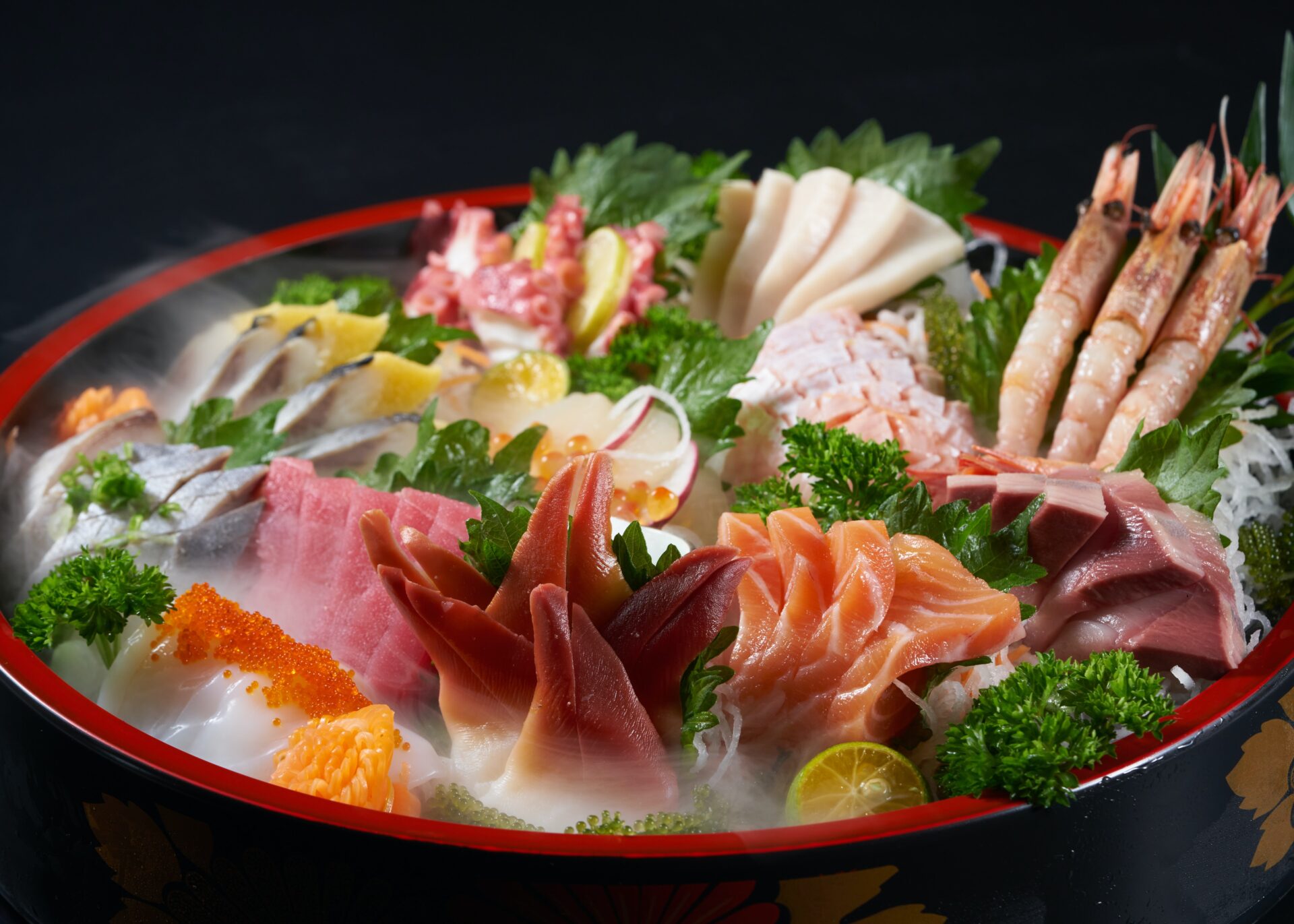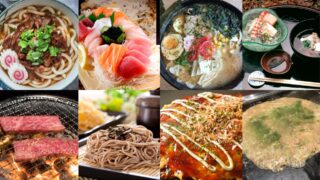
Miho Shimizu is a Japanese freelance writer settled in Shizuoka with her husband and two rabbits. Fascinated with traveling at the age of 18, she has spent most of her long holidays exploring incredible spots around Japan. She also loves to listen to music, draw, and read novels over a cup of green tea.
This post may contain some affiliate links. When you click through and make a purchase we may receive some commission, at no extra cost to you.
Sashimi (刺身) is a Japanese delicacy consisting of raw fish or seafood sliced into bite-sized pieces, renowned for its fresh and delicate flavors. Widely available in Japanese supermarkets, sashimi is one of the best ways to enjoy premium-quality seafood at home. Traditionally, it is served with soy sauce and wasabi, requiring no cooking—just pure, unadulterated freshness. For many visitors to Japan, distinguishing between the various types of sashimi can be challenging. That’s why we’ve prepared this guide to introduce you to 9 of the most popular types of sashimi enjoyed across Japan!
1. Tuna
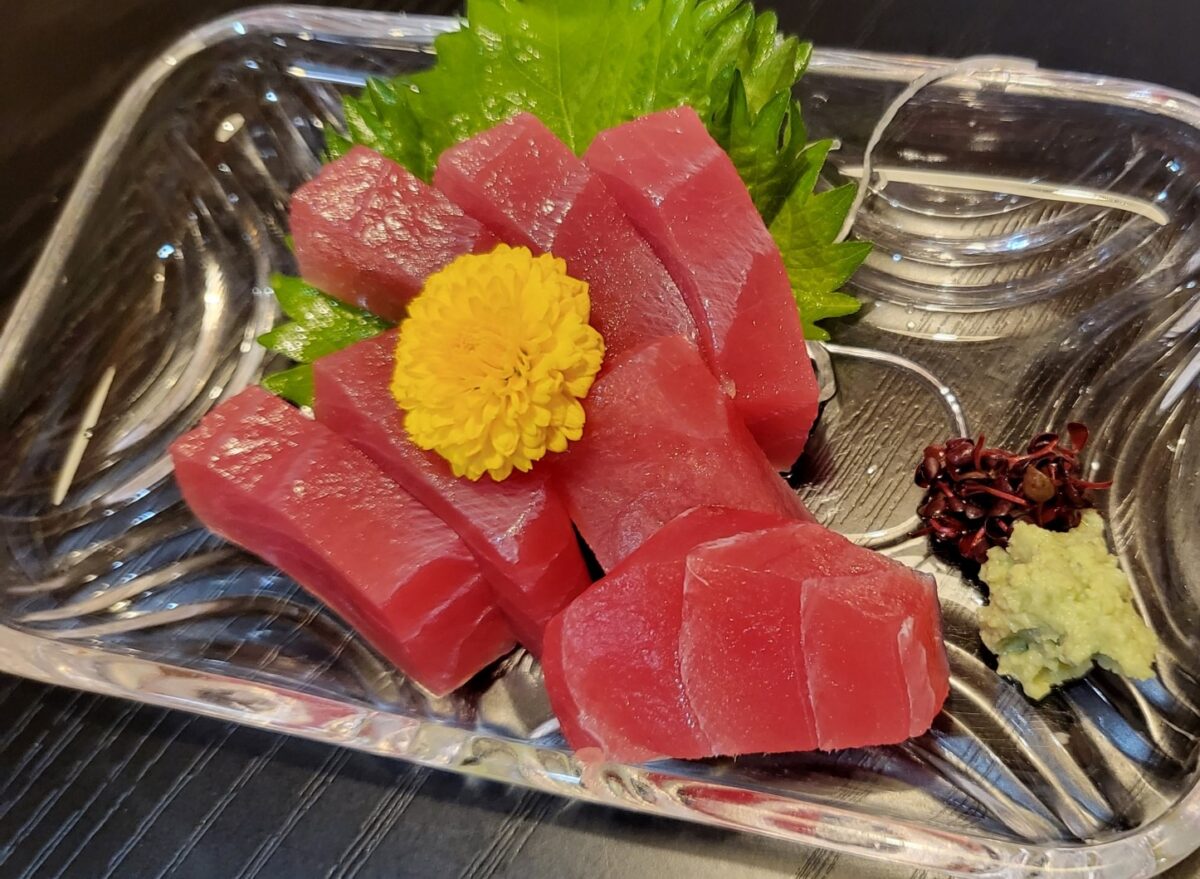
Tuna (maguro, まぐろ in Japanese) is one of the most popular choices for sashimi in Japan, making it an excellent option for beginners. Tuna meat is generally red, but the exact shade varies depending on the part of the fish used. For instance, akami (赤身), the most common type of tuna sashimi, is taken from the spine and back area of the fish. It has a vivid red color and is typically more affordable than other cuts. Chūtoro (中トロ), a slightly pink and moderately fatty cut from the tuna’s back, offers a richer flavor and is a bit more expensive. The most luxurious cut is ōtoro (大トロ), the fattiest part of the tuna from the belly. Its delicate, melt-in-your-mouth texture is a true delight for sashimi lovers. For a memorable experience, don’t miss the chance to try fresh tuna sashimi on a fun Tokyo Fish Market Tour at Tsukiji!
2. Salmon
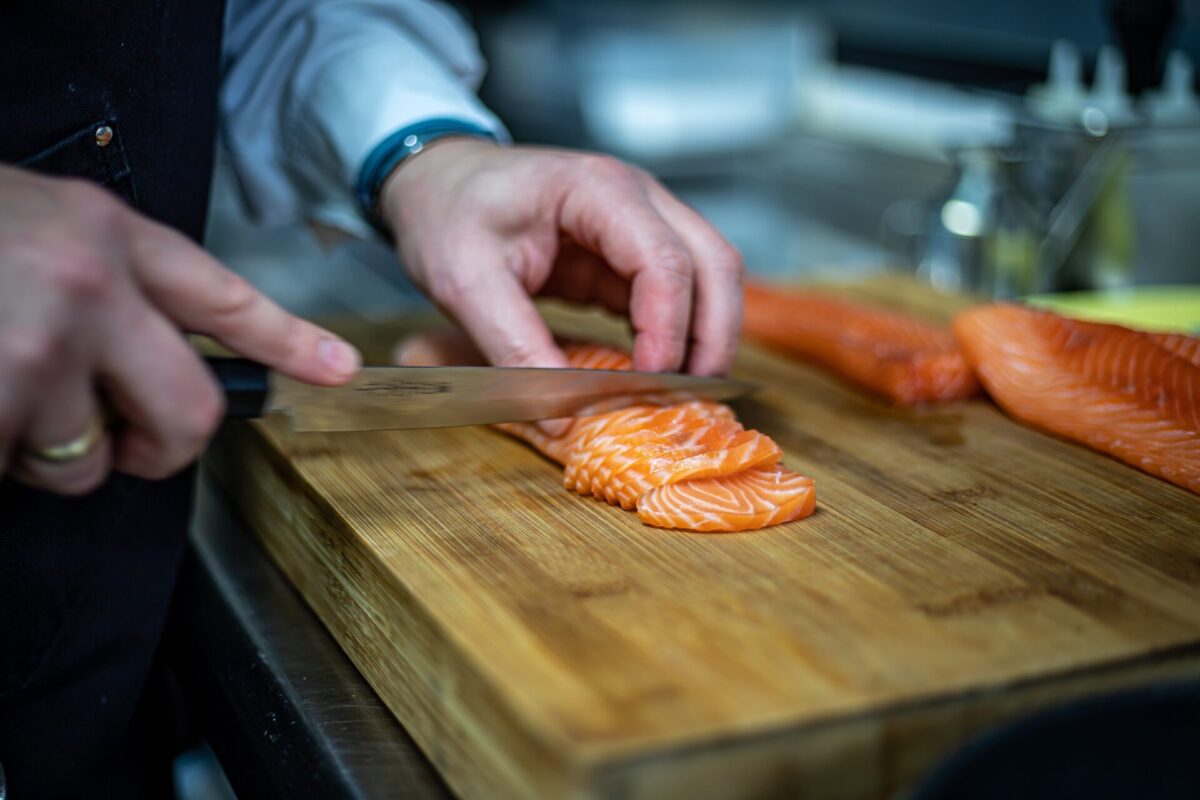
Salmon (サーモン) is a beloved type of sashimi enjoyed by Japanese people of all ages. Its color ranges from light orange to pink, and the texture is tender and juicy. Fresh, in-season salmon often has small white specks of fat, which give it an even softer, melt-in-your-mouth texture. Salmon is reasonably priced and widely available at supermarkets in Japan, making it a popular choice for home meals. At sushi restaurants, salmon is served in various ways—raw, grilled, steamed, or topped with flavorful garnishes. While plain salmon sashimi or sushi is a classic, modern toppings like grilled cheese, avocado slices with onion, or a drizzle of mayonnaise are also popular. These combinations may sound unusual, but they’re worth a try!
3. Red Snapper
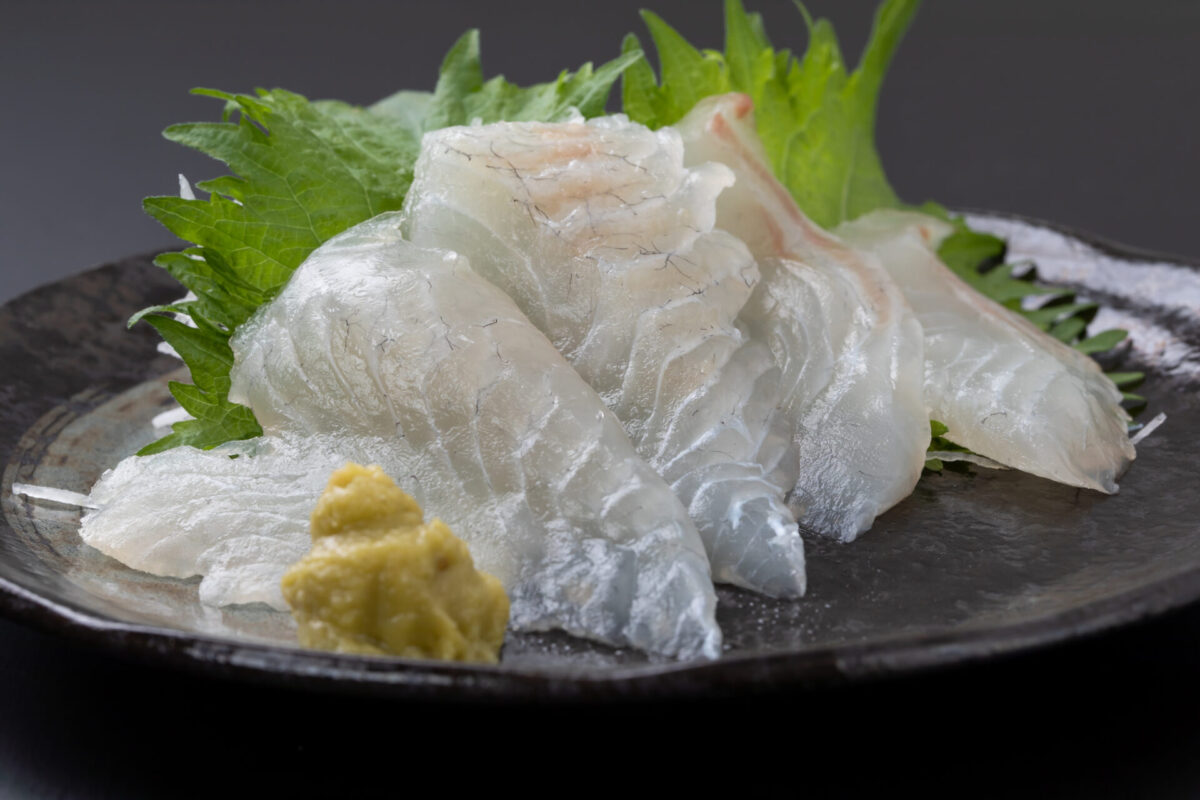
Red snapper (tai, タイ in Japanese) is considered a premium sashimi choice and is often more expensive than other types of sashimi. It is frequently featured in traditional Japanese dishes served at high-end restaurants. For a more budget-friendly option, you can enjoy fresh red snapper at casual sushi establishments, such as conveyor belt sushi restaurants, where a piece costs as little as 100 yen. Red snapper sashimi is characterized by its firm texture, delicate white flesh with hints of pink, and a subtle, slightly sweet flavor.
4. Yellowtail
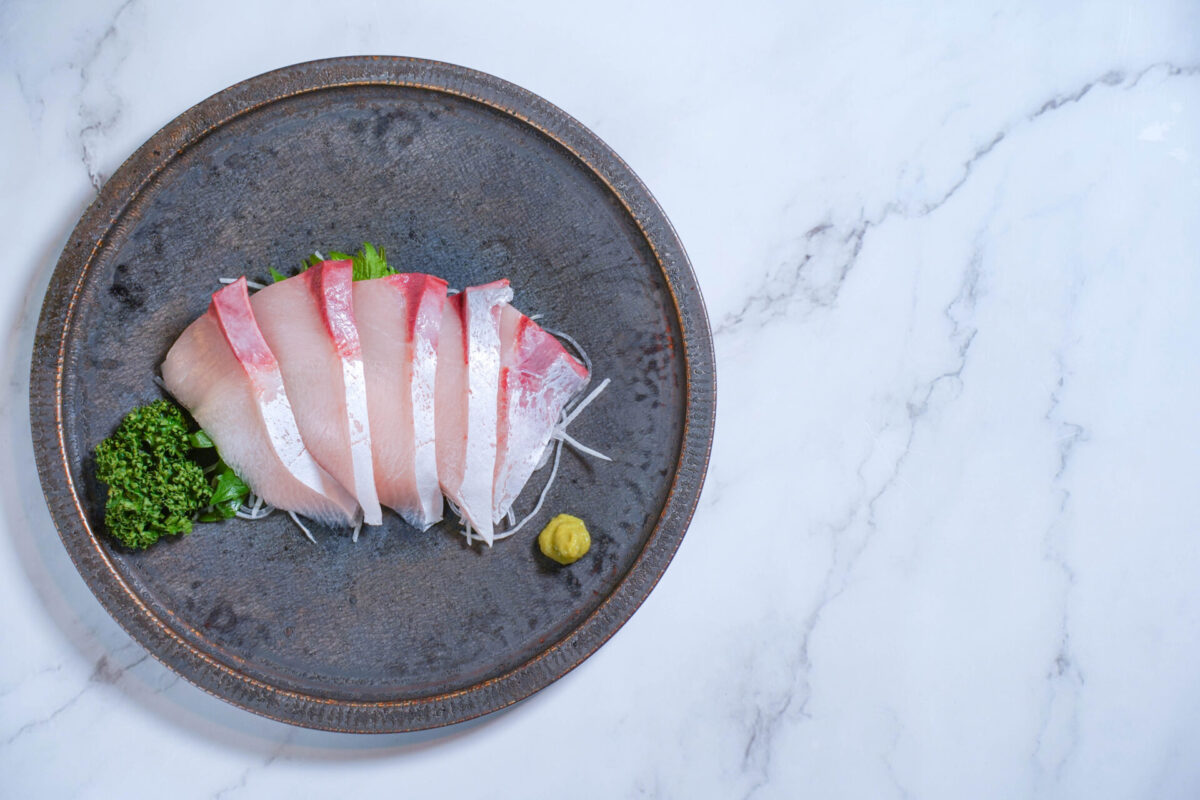
If you’ve already enjoyed classic sashimi options like tuna and salmon and are looking to try something new, yellowtail is an excellent choice for your next culinary adventure. Yellowtail, also known as Japanese amberjack, is called buri (ブリ) in Japanese and is an affordable fish commonly enjoyed as both sashimi and sushi. Fresh yellowtail features a beautiful pink hue with some red parts and is packed with vitamins, minerals, and healthy fats. However, some people may find its taste slightly fishy, especially if the fish isn’t fresh. To fully appreciate its flavor, we recommend trying yellowtail at a reputable sushi restaurant where freshness is guaranteed.
5. Squid
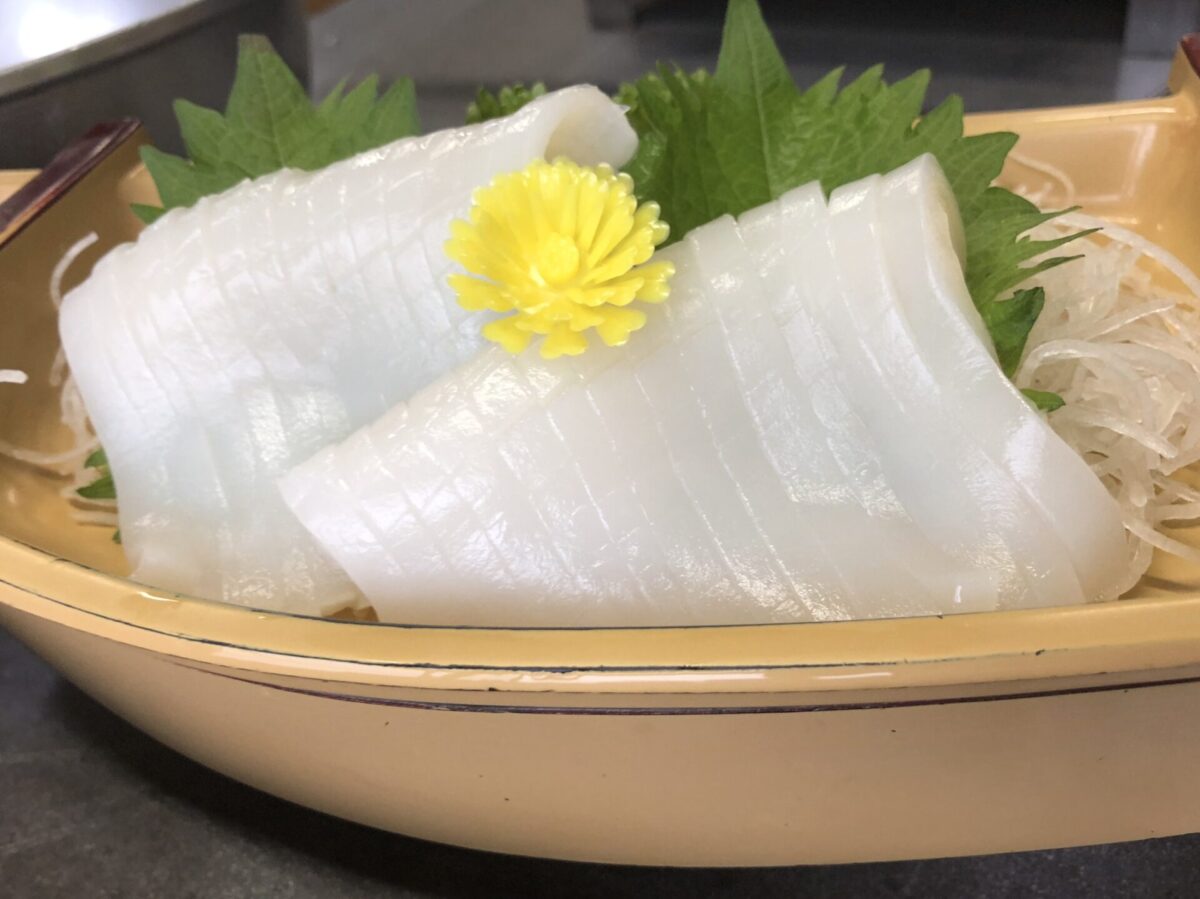
While squid (ika, イカ) is not commonly eaten in some Western countries, it is considered a healthy and popular type of sashimi in Japan. Squid is relatively low in calories and packed with beneficial nutrients such as minerals, taurine, and DHA. For those trying raw squid for the first time, its uniquely chewy texture might take some getting used to. Octopus (tako, タコ) is another popular option with a similar texture and taste when eaten raw. The arms of octopus are especially delicious when grilled, making them a favorite among many. If you’re hesitant to try raw squid or octopus, starting with the grilled versions is a great way to ease into these flavors.
6. Sea Urchin
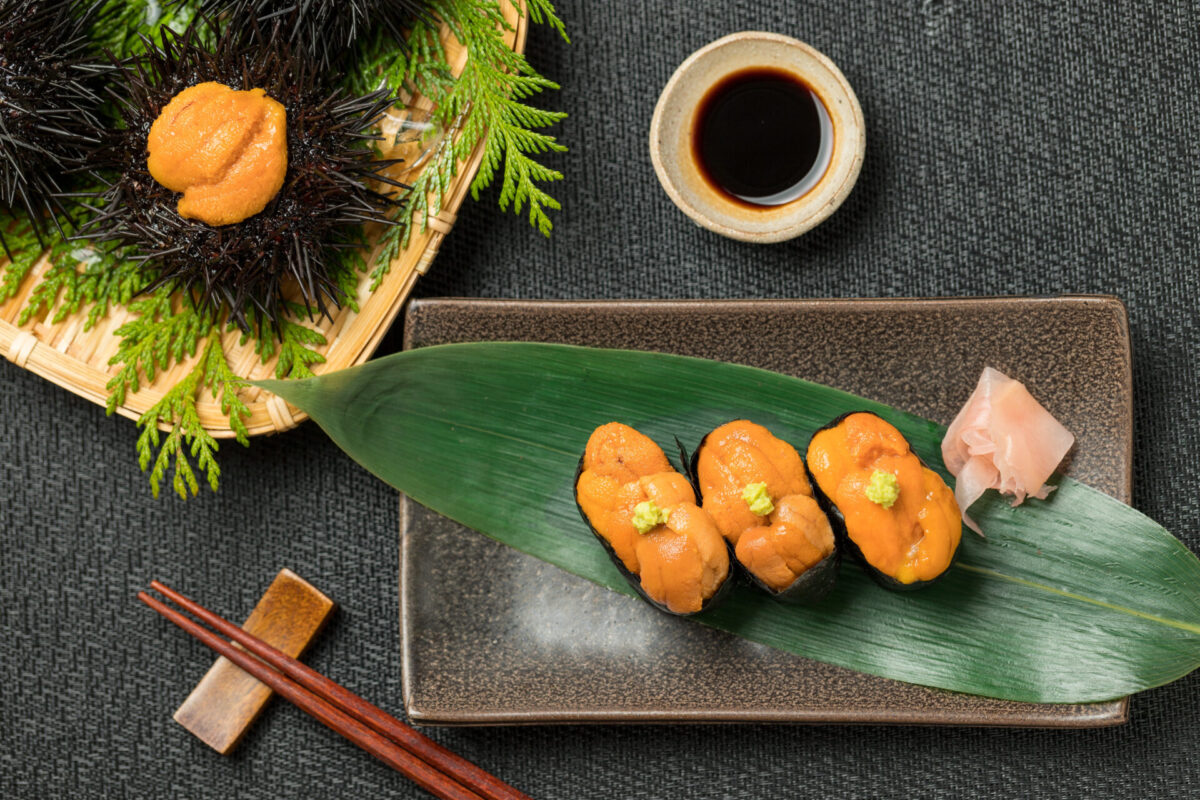
Sea urchin (uni, うに in Japanese) might surprise you as a delicacy if your only association with them is stepping on one at the beach or spotting them at an aquarium. In Japan, however, sea urchin sashimi is highly prized for its vibrant orange color and rich, creamy flavor—some even compare it to kani miso (crab innards). If you’ve never tried either, it’s a little hard to describe, but think of a luxurious, melt-in-your-mouth texture with a briny, ocean taste. While it might not be a favorite among kids, adults often appreciate its bold and unique flavor. Sea urchin sashimi can be tricky to find at supermarkets, so chances are it is better to try it at a sushi restaurant, where it’s often served gunkan-maki style—rice topped with uni and wrapped in a strip of crisp seaweed.
7. Mackerel
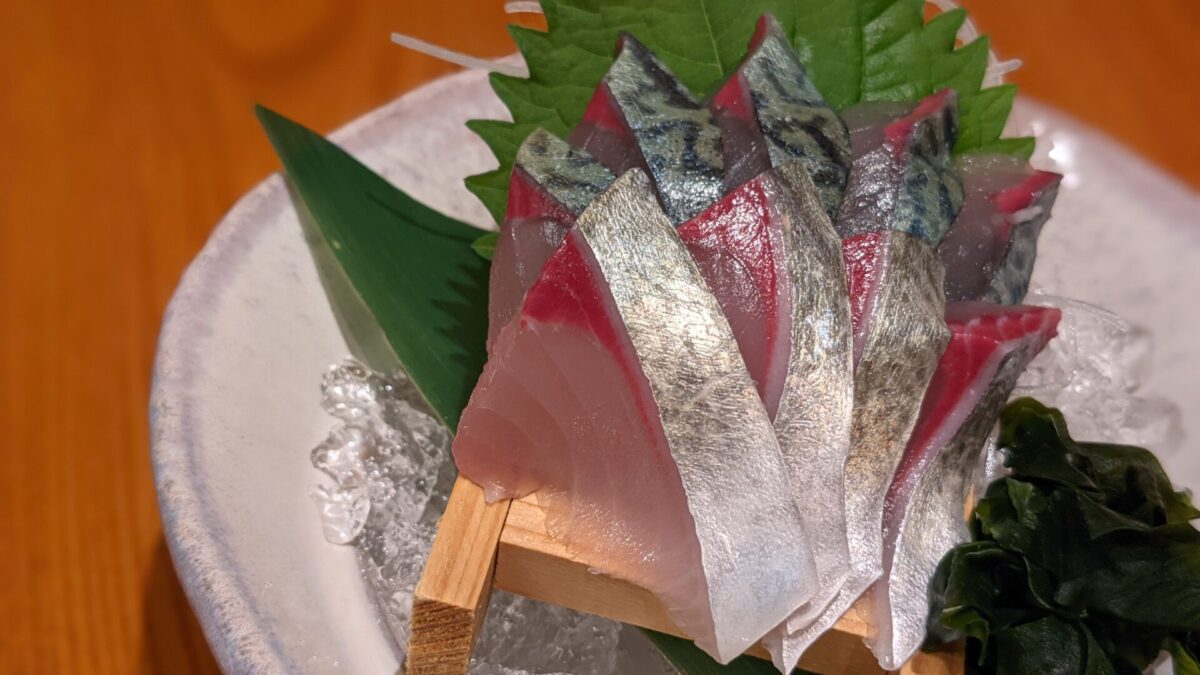
Mackerel (saba, サバ in Japanese) has a bold, rich flavor that some might describe as “fishy,” but when it’s super fresh, that fishiness is barely noticeable. At Japanese restaurants, mackerel sashimi is often topped with a touch of grated ginger, which naturally tones down any strong smells and enhances the flavor. Mackerel isn’t just a sashimi favorite—it’s also fantastic grilled with a pinch of salt or simmered in miso (味噌), and it pairs beautifully with a glass of nihonshu (Japanese sake). The sliced fish has a silvery, shiny skin on one side, making it easy to spot on menus or in supermarkets compared to more common options like tuna or salmon. If you’re feeling adventurous, give horse mackerel (aji, アジ) a try—it’s a similar fish with its own unique charm!
8. Bonito
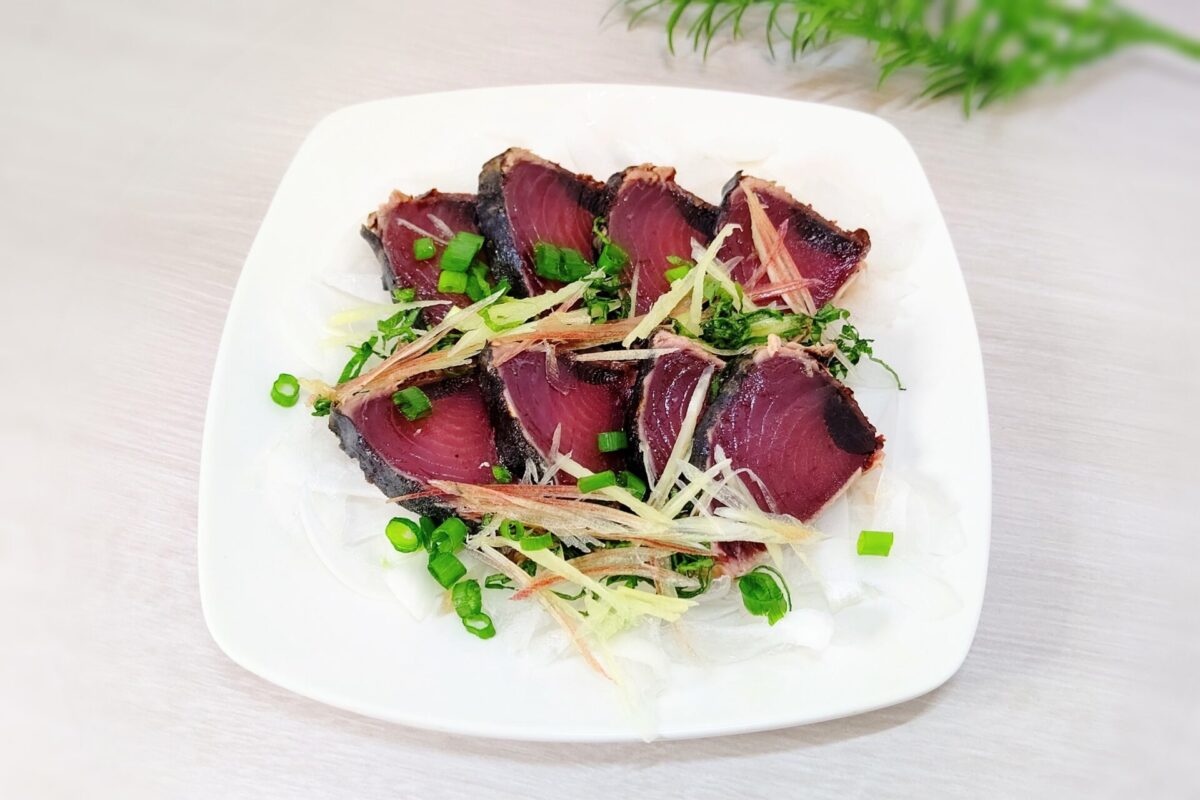
If you’ve ever traveled to Kochi Prefecture, chances are you’ve tried katsuo tataki (seared bonito), a mouthwatering local specialty that dates back to the Edo period. When eaten as sashimi, bonito can have a bold flavor that might feel a bit intense if you’re not used to raw fish. Like with mackerel, adding a touch of grated ginger—or even garlic—is a great way to mellow out its flavor. Bonito has a striking red color, making it look similar to tuna at first glance. The key difference? At sushi restaurants, tuna is usually served plain, while bonito is often paired with toppings like grated ginger and chopped green onions. If you’re curious to try it, you’ll find bonito sashimi readily available at supermarkets—and it’s often quite affordable!
9. Scallops
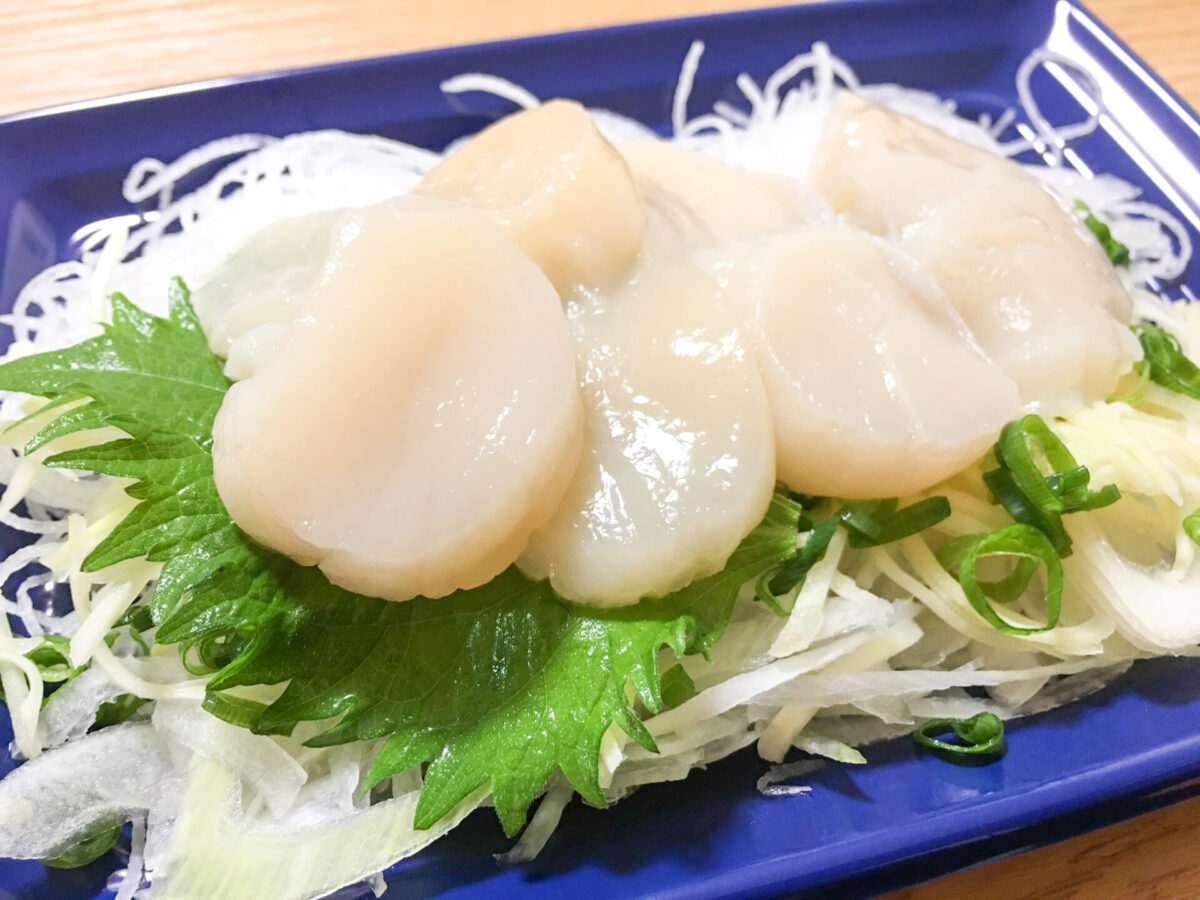
Scallops (hotate, ホタテ) are a delicious type of shellfish with soft, white flesh nestled inside a hard shell. Their tender texture makes them much easier to chew compared to crunchier shellfish like clams, and their slightly sweet flavor might even remind you of sweet shrimp. Scallops are also plumper than most other edible shellfish, giving them a unique bite. While scallops are often enjoyed as sashimi, many Japanese restaurants also serve them seared, offering a completely different texture and taste. Even if raw shellfish isn’t your thing, seared scallops are definitely worth a try—and if you’re a fan of oysters, you’ll probably fall in love with scallops too!
10. Torisashi
For a unique culinary experience, try torisashi (鶏刺し), a Japanese delicacy made from thinly sliced raw chicken, often served with sumiso or soy sauce and wasabi. A variation called toriwasa features lightly seared chicken. This dish is a regional specialty of Kyushu, particularly in Kagoshima and Miyazaki prefectures. Due to the risk of food-borne illness, torisashi requires high-quality chicken and careful preparation to ensure safety.
Sashimi is not just a staple at Japanese supermarkets—it’s also a highlight on the menus of izakayas and restaurants across Japan. For the freshest and most affordable sashimi, a visit to popular seafood markets like Tokyo’s iconic Tsukiji Fish Market is a must. To truly immerse yourself in the experience, why not join a Tokyo Fish Market Tour? You’ll discover what seems to be countless shops and restaurants offering top-quality sashimi without emptying your wallet. It’s a great way to savor Japan’s incredible seafood culture!
Japan Wonder Travel Food Tours
Japan Wonder Travel is a travel agency that offers guided tours throughout Japan.
From private walking tours to delicious Food and Drink tours, we can help organize the best tours just for you! If you want to explore Japan and learn more about the history and backstories of each area you are traveling in, our knowledgeable and friendly guides will happily take you to the best spots!
In addition, we can provide you with any assistance you may need for your upcoming trip to Japan, so please feel free to contact us if you have any questions or need some help!
▶Tokyo Tsukiji Fish Market Food and Drink Tour
Explore the most lively and popular fish market in Tokyo where you will have the chance to try some of the local’s favorite street foods and sake along with your friendly English speaking guide!

▶Shinjuku Bar Hopping Tour: Experience Tokyo’s Nightlife in Izakaya
Check out the best spots in Shinjuku while bar hopping through the lively and vibrant area. Try some delicious local food and drink as you explore the narrow yet photogenic alleys that the town has to offer. Experience Japanese izakaya culture and drink in Shinjuku like the locals!

▶Explore Nishiki Market: Food & Culture Walk
If you’re looking to learn more about the culture and the local cuisine of Kyoto, this is the perfect tour for you! Take part in this Kyoto food and drink tour and explore the 400-year-old market and the surrounding areas.
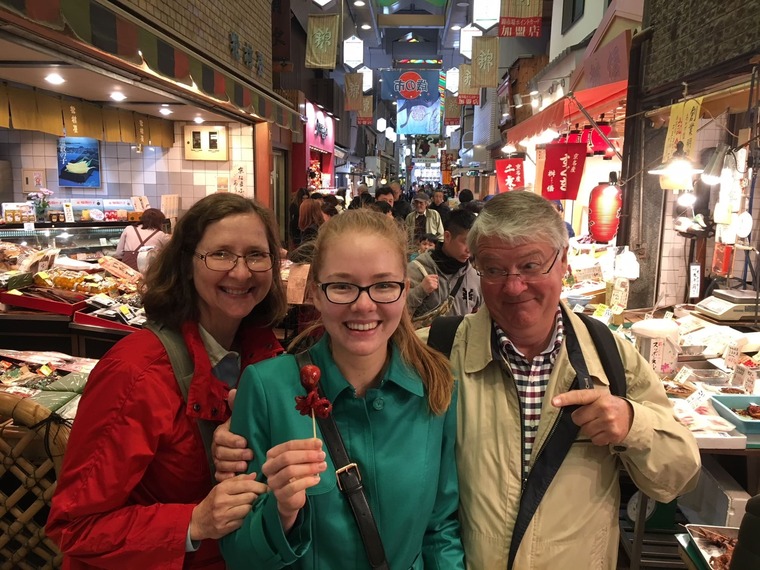
Follow us on Instagram, Facebook, and Twitter for more travel inspiration. Or tag us to get featured!
Happy traveling!
Stay informed of the best travel tips to Japan, the most exciting things to do and see, and the top experiences to have with the Japan Wonder Travel Newsletter. Every week we will introduce you to our latest content.
